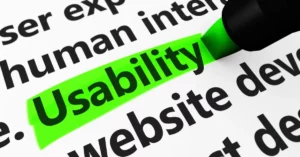Website accessibility is finally starting to see some traction, as businesses begin to understand the need for everyone to be able to use their websites, regardless of impairment or disability.
This does mean commercial opportunities for those companies that can provide accessibility services, like audits and testing. And this naturally leads to automation, enabling said services to be deployed at scale.
However, is it possible to truly automate website accessibility?
Logically, this should be possible, right? After all, websites are made up of code, and code can be written, or re-written, to allow an automated system to check and ‘fix’ accessibility issues.
Unfortunately, this is a pipe dream, at least currently. Accessibility has only recently started to be taken seriously by web designers, developers and web CMS platforms. This means there are millions of established websites out there which have an underlying code structure that cannot be checked and fixed by an automated system – because accessibility had never been considered when designing and building them.
Although some aspects of accessibility are easy enough to check for, many are technically complex and some even require context to understand if they meet compliance – one simple example of this is the use of alt tags for images; non-decorative images should use alt tags to explain what the image is showing, within the context of the content it appears in. An automated system (even so called AI based systems) currently can really only determine if the alt tag for an image is empty or not, and cannot understand the context of the value in the tag if it’s not empty.
To be able to check more technical aspects of a website, an automated system requires there to be some standard structure (code, database etc) that it can navigate through in order to find issues and to fix them; One of the wonderful things, but in this case the worst thing, about the web is that a site can be built in any number of ways – although best practices and patterns do exist in the web design and development world it is still a space where creativity prospers, meaning a non-standard approach is often employed – after all, would you want your website to look and behave like every other website or would you want it to stand apart from the competition? This means an automated system cannot possibly check all aspects of a website to compliance.
There are some services, which are marketing themselves aggressively, that offer automated accessibility checks and I decided to try one recently for a large project that required the website to meet WCAG 2.1 AA compliance.
The site has hundreds of users contributing content (aka User Generated Content) and as anyone who has dealt with UGC projects knows, maintaining a standard for content is impossible with so many contributors, especially where accessibility is concerned as so few people truly understand it. Knowing this, and being aware that there were a couple of technical issues that need fixing for compliance, I tested the site using a well known automated service, expecting at least some failures due to the UCG that I knew had issues.
However, not a single failure was logged by the service. The report they generated after auditing the home page came back with a 100% pass rate for WCAG 2.1 AA, when I knew the webpage couldn’t possibly be meeting compliance!
So if you are considering auditing your website for accessibility compliance, don’t use an automated system; experts say these services, also known as ‘accessibility overlays’, can at best detect 30% of issues, meaning you would be missing most of the problem-areas that would prevent those with disabilities and impairments from successfully using your website. In the US this has already led to legal action being brought against accessibility automated services – see this Forbes/Forrester article (opens in a new tab) from May 2021.
So, there is no quick-fix regarding website accessibility or a website add-on/plugin that will make your website accessible at the click of a button – not yet anyway.





